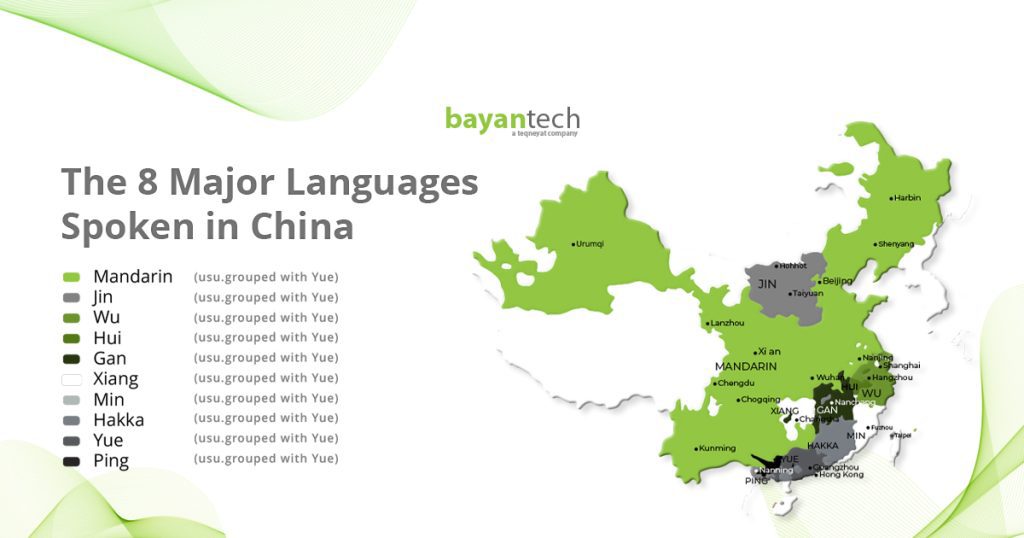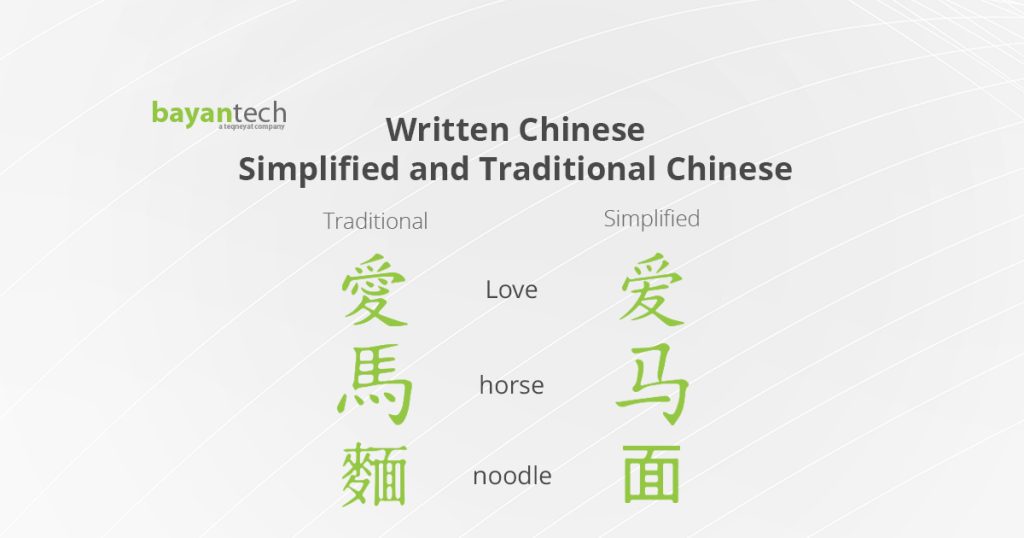When most people think of “Chinese,” they often picture Mandarin Chinese, the most widely spoken language in China and the go-to choice for those learning Chinese as a foreign language.
However, China’s linguistic diversity is far more complex than you may realize.
Did you know there are 302 living languages spoken in China? Surprised?
Well, Chinese is not just one language, but rather a family of languages compromising 8 major groups: Mandarin, Cantonese, Wu, Hakka, Min, Hokkien, Gan, and Xiang.
In this article, you’ll learn all about the different languages spoken in China and understand the spoken and written variations of the Chinese language. Let’s get started!
What Is the Official Language of China?
Standard Chinese, also known as Putonghua (translates to common language), has been the official language of Mainland China since the 1900s. It’s one of the many dialects of Mandarin and is based on the Beijing dialect.
Standard Chinese holds a significant position as it is used as the primary language in education, government, and media. Additionally, it’s the official language of Taiwan and one of the six official languages of the United Nations.
So, Is Mandarin China’s Lingua Franca?
Well, linguists consider Standard Mandarin to be the lingua franca of China since the majority of the country speaks it as a first or second language.
But despite it being China’s official language, Mandarin is not the native language of the entire Chinese-speaking population. Locals often grow up speaking different dialects or languages at home.
China’s linguistic diversity is so vast that it is not uncommon for residents of one rural village to have difficulty understanding the dialect spoken just a couple of villages away.
To bridge this communication gap, the Chinese government has made efforts to promote the use of Standard Chinese throughout the country. While this push for linguistic unity has been successful, it has come at the cost of other Chinese’ minority dialects.
The 8 Major Languages Spoken in China
Language experts typically categorize the 302 Chinese languages into 8 to 10 main groups, which are part of 5 larger language families: Sino-Tibetan, Altaic, Austroasiatic, Hmong-Mien, and Tai-Kadai.
Each of these language groups consists of numerous dialects and subdialects, all with their own variations.
Of course, we can’t fit every single Chinese dialect in one article but let’s take a closer look at the main 8 language groups.

1. Mandarin
Mandarin belongs to the Sino-Tibetan language family and has the largest number of speakers, dominating the southwest, northwest, and northeast parts of China, including the capital city, Beijing.
With over 900 million speakers, Mandarin ranks as the top spoken language in China and the second most spoken language worldwide after English.
More than 80% of China’s population speaks Mandarin and its varieties. Mandarin Chinese has four dialect groups, some of which are mutually intelligible, while others are not.
Mandarin uses four tones to differentiate the meaning of words. This means the same syllable can have different meanings depending on the tone you use when pronouncing it.
This tonal system is one of the differentiating factors among the several Chinese languages.
| Did you know Mandarin is also one of the hardest languages to learn in the world? If you’re curious to learn more, read our comprehensive blog on the hardest languages to learn! |
2. Cantonese (Yue)
Cantonese is another widely spoken Chinese language, with more than 70 million speakers in China. Cantonese speakers make up about 5.6% of the Chinese-speaking population, dominating Hong Kong, Macau, and the Guangdong province.
Like Mandarin, Cantonese Chinese also has several subdialects that vary across regions. However, Cantonese has nine distinct tones, making it more complex in terms of pronunciation and intonation.
Also, Cantonese is entirely different from Mandarin and other Chinese dialects, meaning that a Cantonese speaker won’t be able to communicate with a Mandarin speaker.
3. Wu (Shanghainese)
Wu, also called Shanghainese, is primarily spoken in Shanghai, Jiangsu, Zhejiang, and other eastern regions in China.
There are around 6 to 7 Wu dialects spoken by around 80 million people. While the Northern Wu dialects are mutually intelligible and form a distinct language family, the Southern Wu dialects are not mutually intelligible.
4. Hakka
Hakka, the third most widely spoken Chinese language worldwide after Mandarin and Cantonese, is used by approximately 3% of the Chinese population, which equates to around 44 million speakers.
Hakka speakers live in the provinces of Guangdong, Fujian, Guangxi, Hainan, Sichuan, Jiangxi, and Guizhou. Like most major Chinese languages, Hakka is not mutually intelligible with other dialects.
Hakka is closely related to the Gan dialect and some linguists even classify Hakka as a variety of Gan due to their similarities.
5. Gan
Gan Chinese, spoken by over 22 million people in China, is primarily found in the western parts of the country, including Jiangxi Province, Hunan, Hubei, Fujian, and Anhui.
Among the diverse Chinese dialects, Gan shares more similarities with Mandarin compared to Cantonese or Min dialects.
6. Min
Min languages are primarily spoken in the Fujian province of China, with some speakers also found in parts of Guangdong, Zhejiang, Hainan, and Taiwan. The Min language group has a great diversity of dialects with 8 distinct subdialects.
Overall, Min Chinese has around 70 million users in China and Taiwan combined. Also, Min dialects are not mutually intelligible with one another, nor with other varieties of Chinese.
7. Jin
63 million people speak Jin Chinese, a language family that includes eight different subdialects. That’s about 5.2% of the Chinese population speaking that language.
You’ll find Jin speakers in northern China, particularly in Shanxi Province and parts of Inner Mongolia, Henan, Hebei, and Shaanxi.
Although, throughout history, some linguists categorized Jin as a dialect of Mandarin, others have ended up considering it a distinct language group due to its characteristics.
8. Xiang
Xiang, also called Hunanese, has over 38 million speakers in China, mainly in Hunan Province and parts of Guangxi, Guizhou, and Hubei.
There are two variations of the Xiang language: New Xiang and Old Xiang.
New Xiang, found in Changsha, the capital of Hunan, has been significantly influenced by Mandarin Chinese. On the flip side, Old Xiang shares some characteristics with the Wu languages.
Written Chinese: Simplified and Traditional Chinese
When discussing the languages of China, it’s important to distinguish between spoken and written Chinese. We’ve given you an overview of the diverse spoken Chinese languages.
Now, let’s briefly explain the Chinese writing systems: traditional and simplified Chinese characters.
Traditional Chinese has been used for writing the Chinese language for thousands of years.
However, the Chinese government introduced Simplified Chinese characters in the 1950s to make reading and writing easier for the general population. The goal was to improve literacy rates by reducing the complexity of characters.
This simplification process involved reducing the number of strokes in characters, combining similar characters, and adopting new forms.
As a result of this language reform, simplified characters are now the standard writing system used in mainland China, Singapore, and Malaysia. But traditional characters are still widely used in Hong Kong, Macau, Taiwan, and overseas Chinese communities.

Doing Business in China? Consider These Tips
Businesses seeking to enter the Chinese market face several challenges when it comes to communication and translation due to the diversity of languages spoken in China
Should you focus solely on standard Mandarin, or should you also consider other regional languages? Moreover, when it comes to translating written materials, should you use simplified or traditional Chinese characters?
These are just a few of the questions businesses must address.
So, here are some handy tips to keep in mind if you’re eyeing the Chinese market:
- Conduct thorough market research to identify the specific regions or cities where you want to operate. Understand the language preferences and cultural norms of their target audience.
- Analyze your target audience to determine which Chinese language(s) or dialect(s) to prioritize for localization. In some cases, it may be necessary to localize content into multiple Chinese languages or dialects.
- Invest time and resources into understanding the culture and expectations of your ideal Chinese customer base to build a strong presence.
- Work with professional translation and localization services to ensure the translated content is accurate, culturally appropriate, and effectively communicates the intended message.
Work with Chinese Translation Experts
bayantech is a language services provider with years of experience providing Chinese translation services for businesses of all sizes. We match you native-speaking translators with domain-specific expertise, located in China.
From technical document translation to marketing localization, we have you covered in any Chinese language you need. With our ISO certified quality control and three-step reviews we have in place, you can be confident that you’re getting the highest quality translation.







